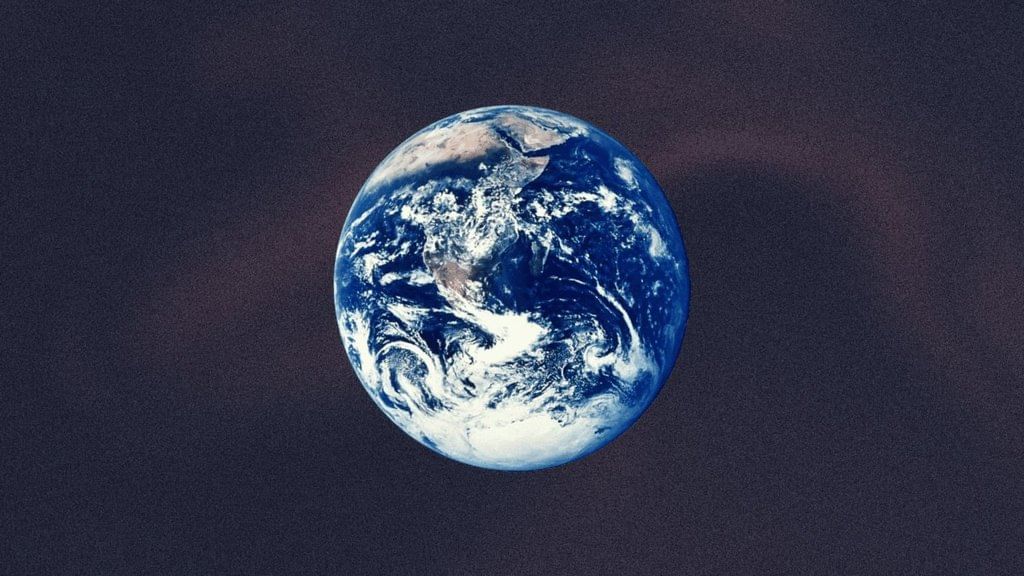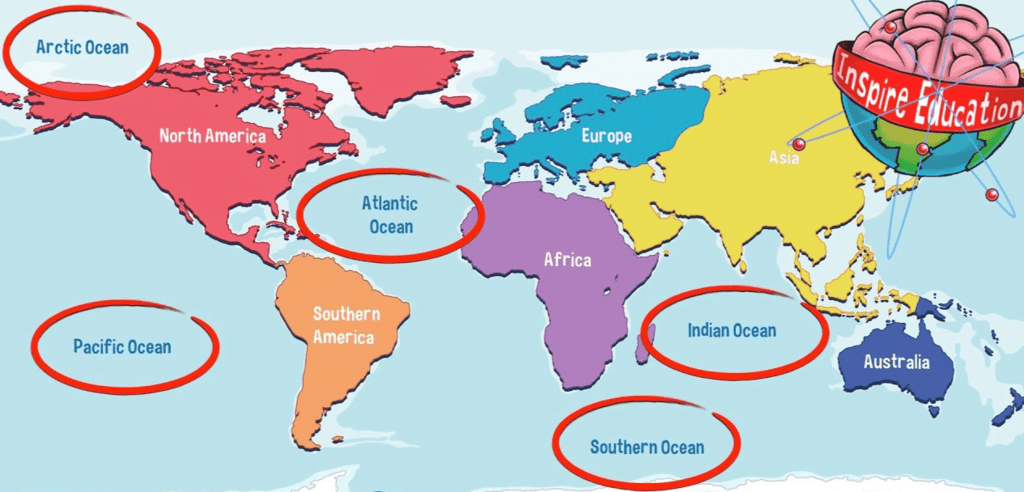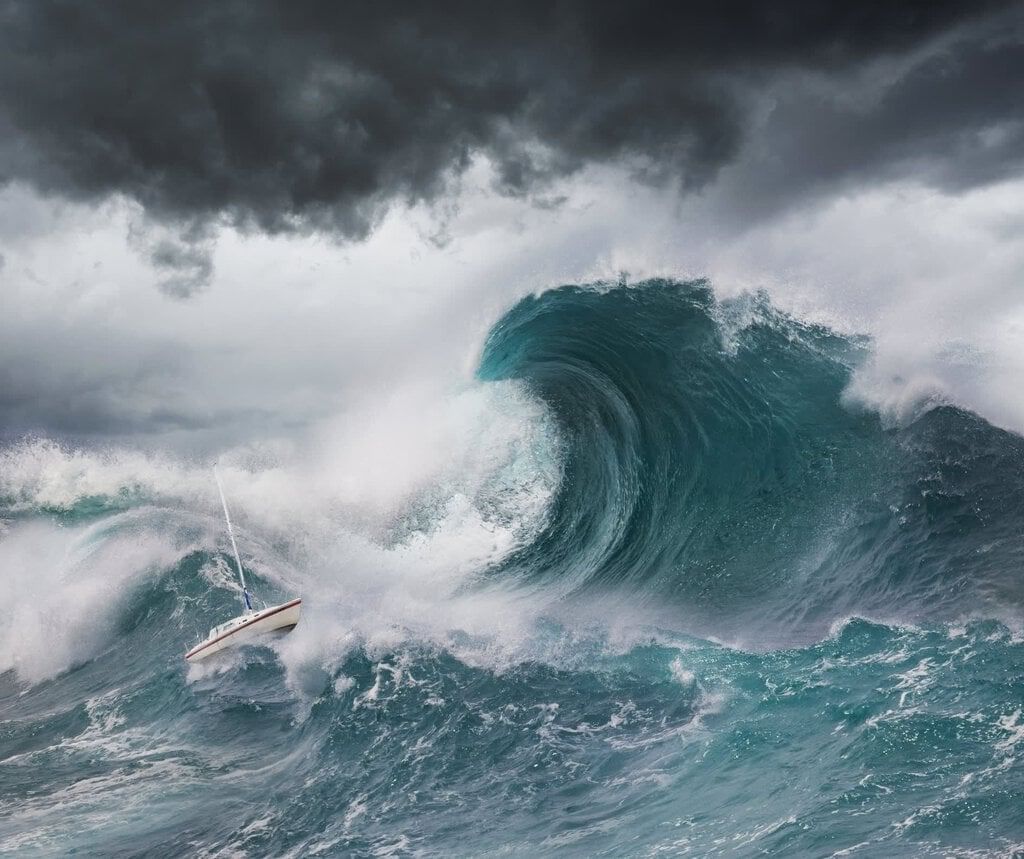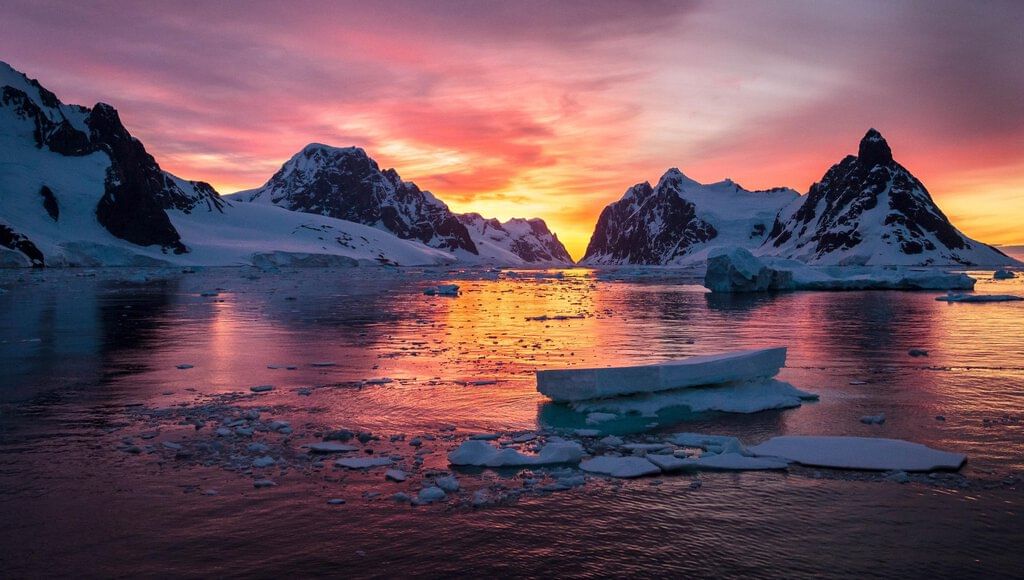Class 6 Exam > Class 6 Notes > Social Studies for Class 6 > NCERT Summary: Oceans and Continents
NCERT Summary: Oceans and Continents | Social Studies for Class 6 PDF Download
Introduction
- Earth is often called the "blue planet" because about three-fourths of its surface is covered by water.
- Land, which covers a little over one-fourth of the surface, also plays a crucial role in human life.
- Oceans and continents influence climate, living organisms, and human history.
 The Indian Navy's Emblem:
The Indian Navy's Emblem:
- The emblem of the Indian Navy features the motto "Sam noh Varunah," a prayer to Varuna, the Vedic deity associated with oceans, sky, and water.
Distribution of Water and Land on Earth:
- Asia is the largest continent in the Northern Hemisphere.
- Northern Hemisphere: More land than water.
- Southern Hemisphere: More water than land.
Understanding Maps:
- Maps provide a visual representation of Earth’s surface, with blue areas indicating oceans and smaller water bodies like seas, bays, and gulfs.
- Oceans: Large bodies of saltwater covering most of Earth's surface.
- Seas, Bays, and Gulfs: Smaller extensions or inlets of the ocean.
Question for NCERT Summary: Oceans and ContinentsTry yourself: What covers about three-fourths of Earth's surface?
View Solution
Question for NCERT Summary: Oceans and Continents
Try yourself:
What covers about three-fourths of Earth's surface?View Solution
The Five Major Oceans:
- Pacific Ocean - Largest.
- Atlantic Ocean - Second largest.
- Indian Ocean - Third largest.
- Southern Ocean - Fourth largest.
- Arctic Ocean - Smallest.
- Oceans are interconnected despite being divided by man-made lines.

Marine Life and Biodiversity:
- Oceans are home to a vast variety of life forms, from tiny algae to large marine animals like whales.
- The oceans contribute to the biodiversity of both plants (marine flora) and animals (marine fauna).
Oceans and Disasters:
- Clouds and Rain: Oceans play a role in creating rain through clouds.
- Ocean-Related Storms: Cyclones and tsunamis can cause significant damage.
- Tsunami: A massive wave often triggered by earthquakes or volcanic eruptions.
- 2004 Tsunami: A massive disaster that hit many countries, including India, with over 200,000 casualties.

Water Bodies:
- Seawater is salty due to the salt washed into the oceans by rivers.
- Freshwater (from rivers, lakes, and glaciers) is clean and used for drinking and other needs.
- Oceans contain most of Earth’s water, but it is salty and unsuitable for direct consumption.
Question for NCERT Summary: Oceans and ContinentsTry yourself:Which ocean is the largest?
View Solution
Question for NCERT Summary: Oceans and Continents
Try yourself:Which ocean is the largest?
View Solution
Continents and Islands:
- Continents: There are different ways to count continents, with the most common model listing seven continents (Africa, Antarctica, Asia, Australia, Europe, North America, South America).
- Islands: Smaller land masses surrounded by water, such as Greenland (the largest island) and India's many small islands (e.g., Andaman and Nicobar Islands, Lakshadweep).
- Antarctica: Explored by India since 1981, with a scientific base called 'Dakshin Gangotri.'

Role of Oceans in the Environment:
- Oceans help produce rain and regulate the Earth's climate.
- They provide more than half of the world’s oxygen through marine plant life, earning them the title of "the planet’s lungs."
- Oceans also play a key role in maintaining Earth's environmental balance.
Impact of Oceans on Human History:
- Oceans have influenced migration, trade, and military campaigns.
- Coastal cultures are shaped by the sea, with many legends and stories surrounding it.
World Oceans Day:
- Celebrated on June 8 to highlight the importance of oceans and the need to protect them.
- Pollution, overfishing, and plastic waste are major threats to marine life.
- Collective efforts are necessary to protect oceans for future generations.
Question for NCERT Summary: Oceans and ContinentsTry yourself: How many continents are commonly listed in the most recognized model?View Solution
The document NCERT Summary: Oceans and Continents | Social Studies for Class 6 is a part of the Class 6 Course Social Studies for Class 6.
All you need of Class 6 at this link: Class 6
|
48 videos|307 docs|28 tests
|
FAQs on NCERT Summary: Oceans and Continents - Social Studies for Class 6
| 1. What is the distribution of water and land on Earth? |  |
Ans. About 71% of the Earth's surface is covered by water, primarily in the form of oceans. The remaining 29% is land, which includes continents and islands. This distribution is significant for understanding Earth's climate, ecosystems, and human activities.
| 2. How many major oceans are there on Earth? |  |
Ans. There are five major oceans on Earth: the Pacific Ocean, Atlantic Ocean, Indian Ocean, Southern (or Antarctic) Ocean, and Arctic Ocean. The Pacific Ocean is the largest and deepest, while the Arctic Ocean is the smallest.
| 3. What are the names of the continents? |  |
Ans. The Earth has seven continents: Asia, Africa, North America, South America, Antarctica, Europe, and Australia. Each continent has its own unique geography, climate, and biodiversity.
| 4. Why is the distribution of land and water important for life on Earth? |  |
Ans. The distribution of land and water is crucial for supporting life on Earth. Water is essential for all living organisms, influencing climate and weather patterns, while land provides habitats for plants and animals. This balance plays a key role in ecological systems and human survival.
| 5. How do oceans influence the climate of nearby land areas? |  |
Ans. Oceans play a significant role in regulating the climate of nearby land areas by absorbing and storing heat. They help moderate temperatures, provide moisture for precipitation, and influence wind patterns, which can affect weather conditions on land.
Related Searches

















